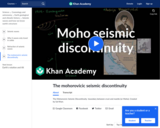
The Mohorovicic Seismic Discontinuity- boundary between crust and mantle (or Moho)
- Subject:
- Astronomy
- Physical Science
- Material Type:
- Lesson
- Provider:
- Khan Academy
- Author:
- Stanford School of Medicine
- Date Added:
- 09/23/2013

The Mohorovicic Seismic Discontinuity- boundary between crust and mantle (or Moho)

The video resource "The Moon: Crash Course Astronomy #12" is included in the "Astronomy" course from the resources series of "Crash Course". Crash Course is a educational video series from John and Hank Green.
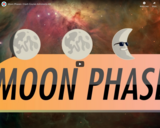
The video resource "Moon Phases: Crash Course Astronomy #4" is included in the "Astronomy" course from the resources series of "Crash Course". Crash Course is a educational video series from John and Hank Green.
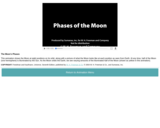
This "The Moon's Phases" learning object is the from the Sumanas resource series. Sumanas offers a robust selection of content and services that are directed at enhancing the learning experience.
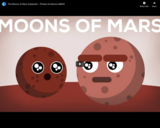
What do you know about the Moons of Mars? Nothing? They are super cool (and strange), promise. The video "The Moons of Mars Explained - Phobos & Deimos MM#2" is a resource included in the Space sciences topic made available from the Kurzgesagt open educational resource series.
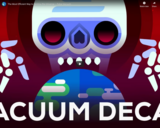
What if there is a way to destroy the universe so fundamentally that life as we know it will be impossible forever? The video "The Most Efficient Way to Destroy the Universe - False Vacuum" is a resource included in the Space sciences topic made available from the Kurzgesagt open educational resource series.
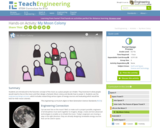
Students are introduced to the futuristic concept of the moon as a place people can inhabit. They brainstorm what people would need to live on the moon and then design a fantastic Moon colony and decide how to power it. Students use the engineering design process, which includes researching various types of energy sources and evaluating which would be best for their moon colonies.
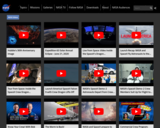
Danielle Roosa, granddaughter of Apollo 14 astronaut Stuart Roosa, demonstrates NASA and Microsoft's free Kinect interactive Xbox video game, 'Mars Rover Landing.' The new game lets players try their skill at landing the Curiosity rover on Mars. The game is available free of charge in the Xbox Live Marketplace and Kinect Central.
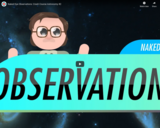
The video resource "Naked Eye Observations: Crash Course Astronomy #2" is included in the "Astronomy" course from the resources series of "Crash Course". Crash Course is a educational video series from John and Hank Green.
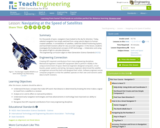
For thousands of years, navigators have looked to the sky for direction. Today, celestial navigation has simply switched from using natural objects to human-created satellites. A constellation of satellites, called the Global Positioning System, and hand-held receivers allow for very accurate navigation. In this lesson, students investigate the fundamental concepts of GPS technology trilateration and using the speed of light to calculate distances.
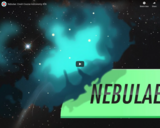
The video resource "Nebulae: Crash Course Astronomy #36" is included in the "Astronomy" course from the resources series of "Crash Course". Crash Course is a educational video series from John and Hank Green.
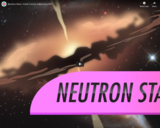
The video resource "Neutron Stars: Crash Course Astronomy #32" is included in the "Astronomy" course from the resources series of "Crash Course". Crash Course is a educational video series from John and Hank Green.
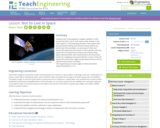
Students learn how engineers navigate satellites in orbit around the Earth and on their way to other planets in the solar system. In accompanying activities, they explore how ground-based tracking and onboard measurements are performed. Also provided is an overview of orbits and spacecraft trajectories from Earth to other planets, and how spacecraft are tracked from the ground using the Deep Space Network (DSN). DSN measurements are the primary means for navigating unmanned vehicles in space. Onboard spacecraft instruments might include optical sensors and an inertial measurement unit (IMU).
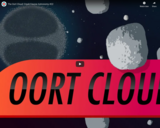
The video resource "The Oort Cloud: Crash Course Astronomy #22" is included in the "Astronomy" course from the resources series of "Crash Course". Crash Course is a educational video series from John and Hank Green.

This course provides an introduction to the universe beyond the Earth. We begin with a study of the night sky and the history of the science of astronomy. We then explore the various objects seen in the cosmos including the solar system, stars, galaxies, and the evolution of the universe itself. As an online course, it is equivalent to 6 lecture hours, and satisfies science requirements for the AA and AS degree. It is designed to be thorough enough to prepare you for more advanced work, while presenting the concepts to non-majors in a way that is meaningful and not overwhelming. We will consider the course a success if you have learned how to think about the universe critically in an organized, logical way, and to have enhanced your appreciation of the sky around us.
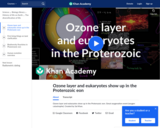
Ozone Layer and Eukaryotes Show Up in the Proterozoic Eon. Great Oxygenation Event (Oxygen Catastrophe)
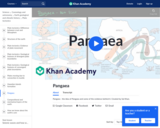
Pangaea - the idea of Pangaea and some of the evidence behind it
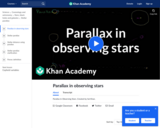
Parallax in Observing Stars
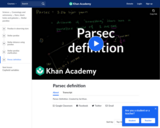
Parsec Definition
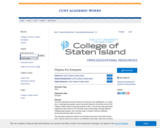
The online educational resource Physics For Everyone is the scaffolding for a 3 contact hour, 3 credit general education course that conveys the relevance, beauty, and power of physics as a foundation of science and technology in the public interest.
This slide deck provides the outline for the semester-long course. Each week’s lecture topics, with key points to be covered, are highlighted in two slides, which also list writing prompts, problem-solving exercises, and labs. Also, we have curated a list of high-quality online video resources that students (and instructors) should use to help them learn (and teach) physics ideas and concepts using demonstrations, animations, and humor. Many of those videos are parts of larger series and programs, created by some of the most skilled and popular online presenters in the world; that means some of their content is commercially sponsored, but all the content is free to students and instructors. Finally, we have envisioned this course so that students are assessed with a large set of low-stakes, just-in-time-type assignments and laboratory exercises.
This work has been generously supported by New America’s PIT-UN (Public Interest Technology University Network) challenge grant program, and is licensed under a Creative Commons Attribution-Noncommercial-Share Alike 4.0 License.